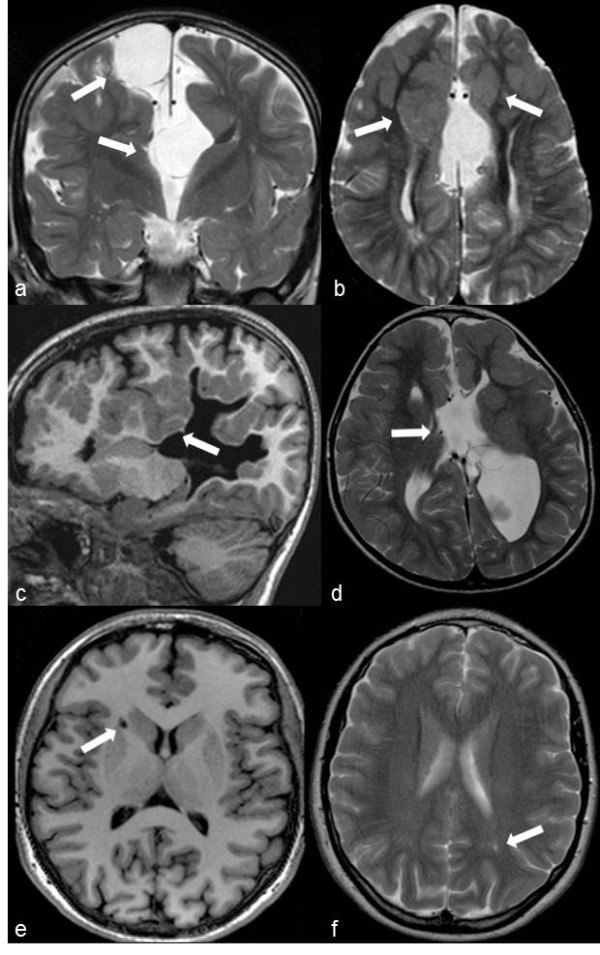Figure 1.

Overview of the typical neuroimaging findings in ofd1 patients. A, b: Case ID50, 52 months (OFD1 mutation: 337 C > T; Q113X).a) Coronal TSE T2-weighted image: corpus callosum agenesis. Two arachnoid cysts (arrows) are respectively located upper to the roof of the third ventricle and on the right side of the falx. Note the “Texas longhorn” configuration well depicted only on the left side where the Probst bundle is also well visible. b) Axial TSE T2-weighted image: thinning and parallel orientation of the lateral ventricles. Bilateral fronto-mesial subcortical heterotopias (arrows) are evident along the anterior part of the interhemispheric defect. The bigger one anteriorly truncates the right Probst bundle that is thinner than the controlateral. A subtle thickening of the frontal cortical surfaces suggestive of polymicrogyria is also evident. Note the thin multiple dilatations of Virchow-Robin spaces at the posterior white matter. c, d: Case ID39, 8-year-old (OFD1 mutation: 290 A > G; E97K).c) Sagittal TFE T1-weighted 3D images: note the frontal and parietal clefts surrounded by irregular and thickened grey matter consistent with infolding polymicrogyria (arrow). d) Axial TSE T2-weighted image: the interhemispheric defect is caused by the agenesis of the corpus callosum. Two arachnoid cysts are located between the outpouching of the third ventricle (arrow) and the enlarged left lateral ventricle. On the left side, polymicrogyria of the frontal cortical surface, as well as the periventricular deep portion of the infolding, are both well appreciable. e, f: Case ID13, 13-year-old (OFD1 mutation: 247CAA > TAA; Q83X).e, f) Axial TFE T1weighted 3D and TSE T2 images: note some mild dilatation of Virchow-Robin spaces at the supratentorial white matter (arrows).
